Article from TNU APRIL 2024
ON TOUR: Malaga seen again
Malaga is one of those places that many of us have visited on a Mediterranean cruise but not really explored. 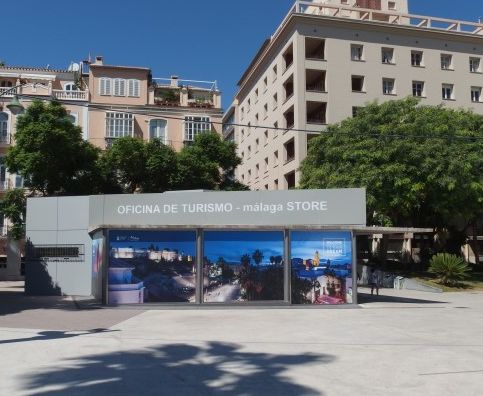 With friends from Montreal flying in to seek sunshine away from a cold Canadian winter it seemed that a two-hour easyJet flight from Luton was a good idea!
With friends from Montreal flying in to seek sunshine away from a cold Canadian winter it seemed that a two-hour easyJet flight from Luton was a good idea!
The airport is very modern and really geared up to handle tourist traffic quickly. We were even treated to an airbridge on the way back. Inbound it was a coaching stand.
Malaga Airport is about five miles west of the city and a 30-minute easy drive. Generally, Malaga costs are dramatically cheaper than Barcelona.
Our residence during a five-night stay was the Room Mate Valeria Hotel, a simple unpretentious 4-star property, on the front, next to the tourist information office. It had a fine rooftop bar with dip pool and views across the bay to the cruise terminal. No ships in at this time of year.
Malaga is typical of Mediterranean ports in that at the beginning of recorded history it was part of the Roman Empire, lost its way towards the end of the first millennium and became Muslim for 700 years until 1492. For the next 500 years it was often fought over and finally in 1936 fell to Franco’s Nationalist troops. The city today has a population of half a million and is a major industrial and commercial centre. Agriculture is still important. Tourism plays an important role.
A ten-minute walk from the hotel is El Corte Inglés, large John Lewis style departmental store, with prices to match. Also close by is the very modern 1,000-seat Soho Theatre, supported by the Malaga-born actor Antonio Banderas. The programme for summer 2024 is mainly in Spanish, but clearly aimed at an international audience.
It is a good idea on day one to take the open top tour bus which takes in many of the places mentioned below.
Centro Histórico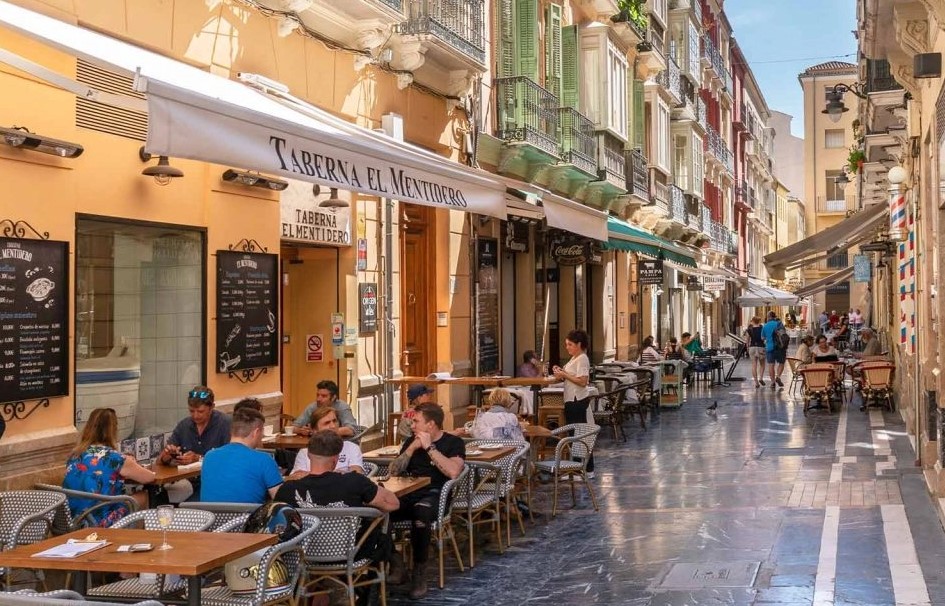 A very short walk from the hotel is the Centro Histórico, or old town, a cluster of charismatic pedestrian lanes dominated by Malaga Cathedral overlooking the whole complex with its unfinished second tower, money for the project said to have been diverted to the American independence campaign of the 1770s.
A very short walk from the hotel is the Centro Histórico, or old town, a cluster of charismatic pedestrian lanes dominated by Malaga Cathedral overlooking the whole complex with its unfinished second tower, money for the project said to have been diverted to the American independence campaign of the 1770s.
The elegant main thoroughfare, Calle Marqués de Larios, has boutiques in 19th century buildings, and many, many restaurant and bar terraces fringing busy squares such as the Plaza de la Constitución, the venue for open air cultural activities. The whole area buzzed in the middle of February with blue skies and the temperature hovering around 20°C. It had not rained for ages. The Picasso Museum shows works by the great Malaga-born artist in a converted palace.
Alcazaba 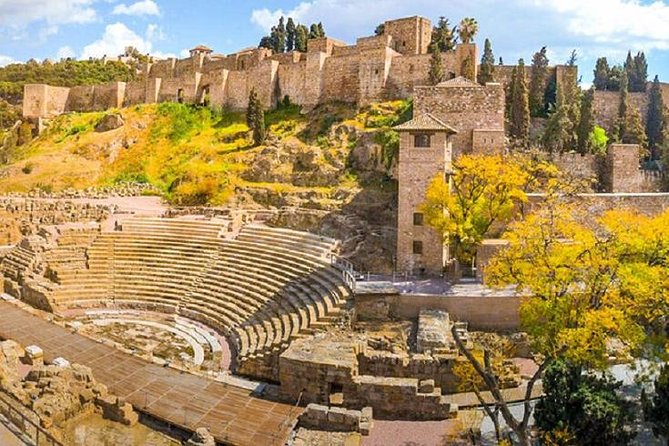 The Alcazaba is a palatial fortification overlooking the whole city but very much integrated into it. Be prepared for some steep climbs. Adjacent to the entrance is a Roman amphitheatre dating from the 1st century AD.
The Alcazaba is a palatial fortification overlooking the whole city but very much integrated into it. Be prepared for some steep climbs. Adjacent to the entrance is a Roman amphitheatre dating from the 1st century AD.
The current complex was begun in the 11th century and was modified or rebuilt multiple times up to the 14th century.
The castle is famous for its three-month siege by the Catholic monarchs, Ferdinand and Isabella, which ended only when hunger forced the Malagueños to surrender. Afterwards Ferdinand occupied the site, while his queen took up residence in the town. Interesting historic fact: this was the first conflict in which gunpowder was used by both sides.
Castle of Gibralfaro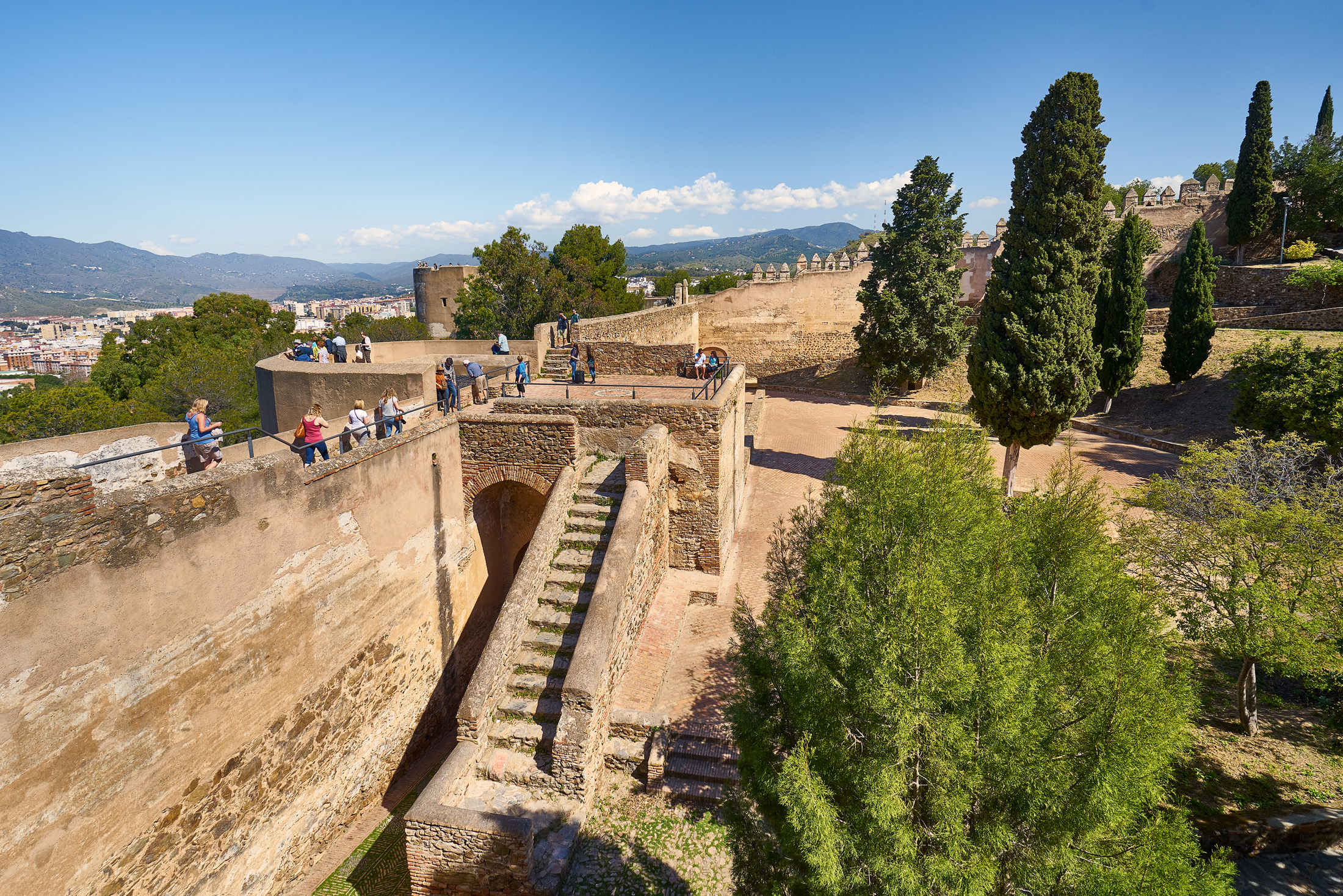 Much further up the hill, and connected by a long walled uphill corridor is the Gibralfaro fortress where there is a modest military museum with various military paraphernalia explaining about daily life of soldiers in the castle. Sadly it is only in Spanish. The views are tremendous.
Much further up the hill, and connected by a long walled uphill corridor is the Gibralfaro fortress where there is a modest military museum with various military paraphernalia explaining about daily life of soldiers in the castle. Sadly it is only in Spanish. The views are tremendous.
To get down, but not up (especially in the summer heat) one descends via the zig-zag steps to the Plaza del General Torrijos and onto the very modern esplanade with cafés, tourist shops and boat tour offerings.
La Tabacalera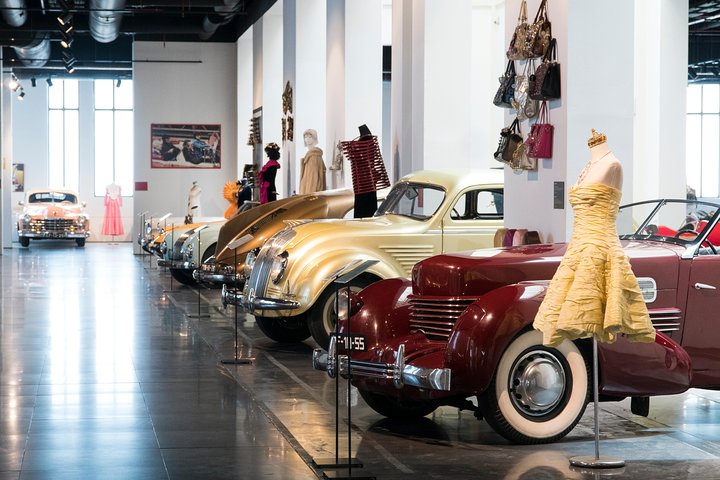 Located on the periphery of the town, and also on the tourist bus route, is the old Tobacco Factory, known as "La Tabacalera", a unique cultural space.
Located on the periphery of the town, and also on the tourist bus route, is the old Tobacco Factory, known as "La Tabacalera", a unique cultural space.
The museum opened in 2010 and now houses one of the most important vintage car collections in the world, 80 classic cars from the "Winner" of 1898 to the hydrogen prototype of 2010. Vehicles that stand out from the Belle Epoque era the 1904 Belgium Minerve, the 1911 French Renault AX and the 1916 American Buick. Cars from this period included in the exhibition are the 1921 Italian Lancia, the 1917 Spanish Hispano Suiza and the 1920 French Unic.
Elvis Presley's beloved Cadillac is on display. The English Tradition collection features luxurious models that represent the English automotive industry. Cars in this collection exhibit exquisite tradition and quality. While the Rolls-Royce is heavily featured in this collection, there are also several Bentleys and a classic Jaguar. No Lotus.
Also prominent are more than 300 pieces of haute couture that describe the historical and artistic evolution since the end of the 19th century.
The Alhambra 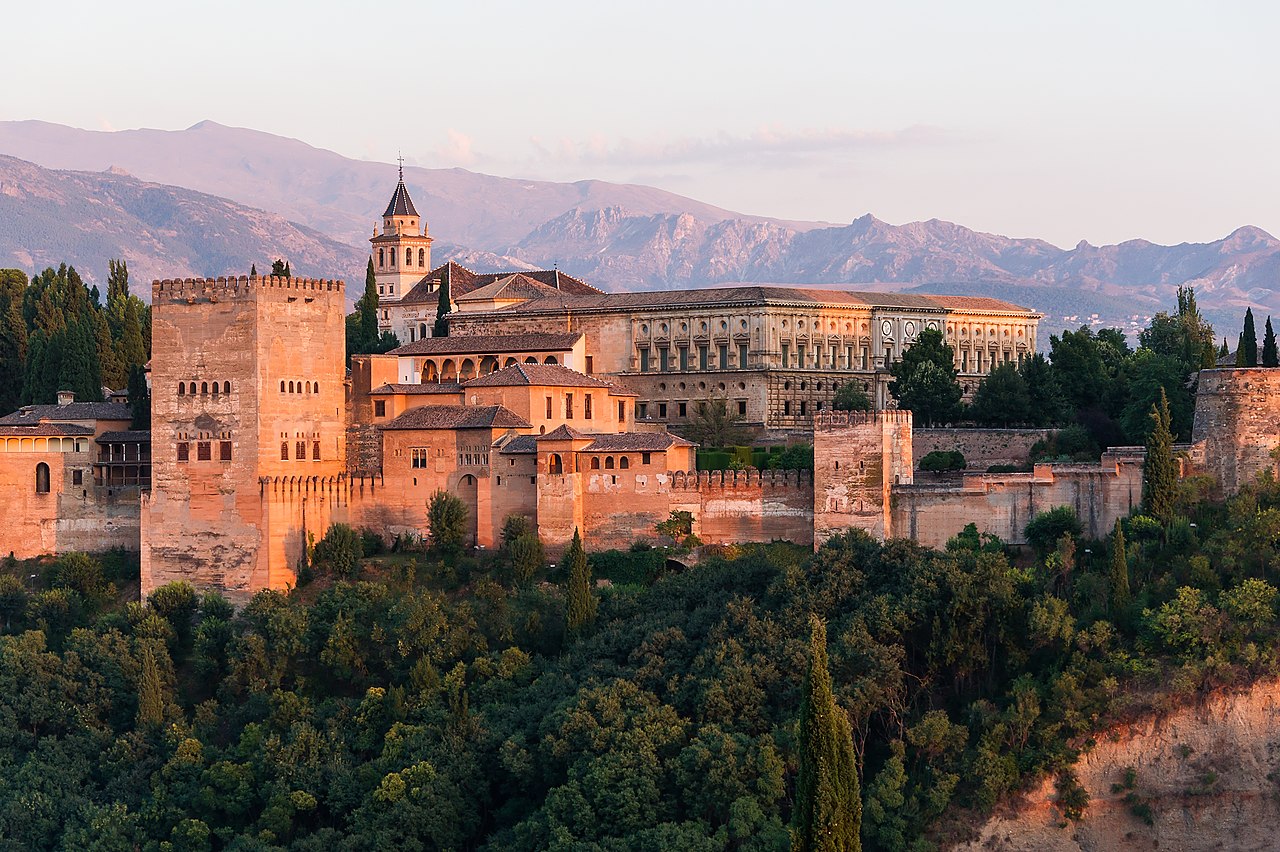 When in Malaga a day visit to Granada and the Alhambra is a must. You can take a (luncheon included) tour complete with guide, or for us, on this occasion, a train ride. On balance, whilst the train was very good, I would recommend the guided tour. Both take about two hours from the port city.
When in Malaga a day visit to Granada and the Alhambra is a must. You can take a (luncheon included) tour complete with guide, or for us, on this occasion, a train ride. On balance, whilst the train was very good, I would recommend the guided tour. Both take about two hours from the port city.
Constructed on a plateau that overlooks the city, the Alhambra was built chiefly between 1238 and 1358. After the expulsion of the Moors in 1492, much of the interior was ruined. Charles V, who ruled in Spain as Charles I (1516–56), rebuilt portions in the Renaissance style and destroyed part of the Alhambra in order to rebuild in an Italianate fashion. In 1812 some of the towers were blown up by a French force during the Peninsular War and the rest of the buildings narrowly escaped the same fate. In 1821 an earthquake caused further damage to the complex. An extensive repair and rebuilding programme was undertaken during the whole of the 18th century. Additional restoration and conservation work continues.
The wonderful park outside the palace was originally planted by the Moors with roses, oranges, and myrtles. Its most characteristic feature, however, is the dense wood of English elms brought there in 1812 by the Duke of Wellington during the Peninsular War.
Our tour took us into the Palace itself, one room after another. The Salón de los Embajadores (Hall of the Ambassadors), inside the Torre de Comares (Comares Tower), is the largest room in the Alhambra. It is 37ft (11m) square and is topped by a dome whose centre is 75ft (23m) high. This was the grand reception room, and the throne of the sultan was placed opposite the entrance.
Terraced gardens, pools, and fountains combine to enchanting effect in the Patio de la Acequia (Court of the Irrigation Channel), named for the channel that supplies its water. An open-air theatre within the complex occasionally offers international performances of music and dance.
All images courtesy of the Tourist Board or Malcolm Ginsberg.
www.andalucia.com/cities/malaga/home.htm
www.easyjet.com/holidays
READERS' COMMENT
All comments are filtered to exclude any excesses but the Editor does not have to agree with what is being said. 200 words maximum
No one has commented yet, why don't you start the ball rolling?
Travel News Update
20 Lodge Close, Edgware HA8 4RL, United Kingdom
+44 (0)7973 210631
malcolm@ginsberg.co.uk
© 2023 Travel News Update Ltd
